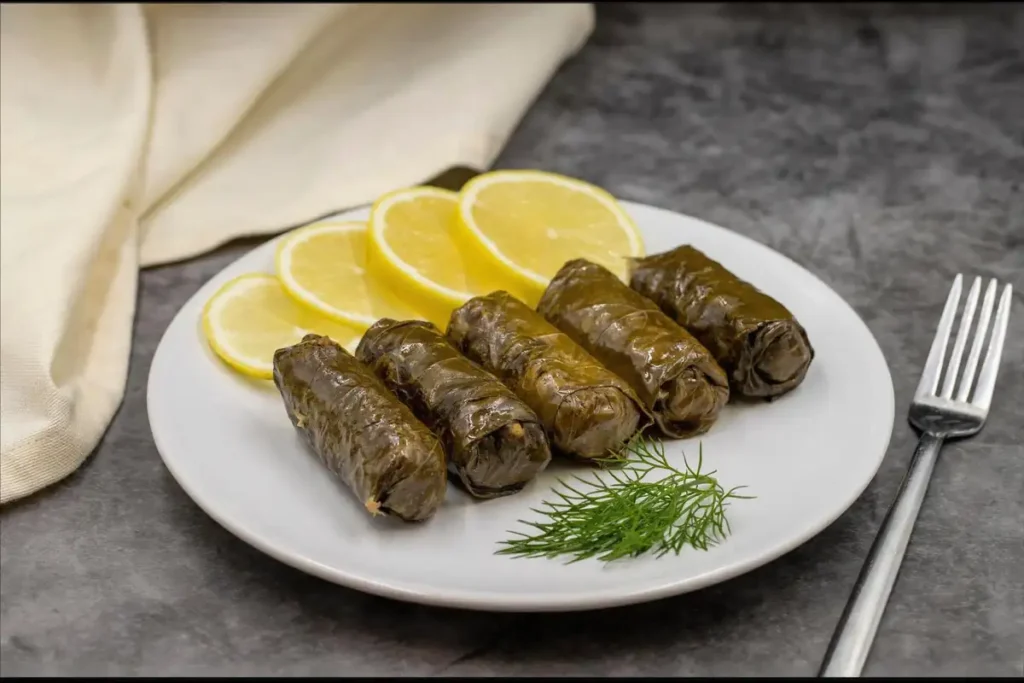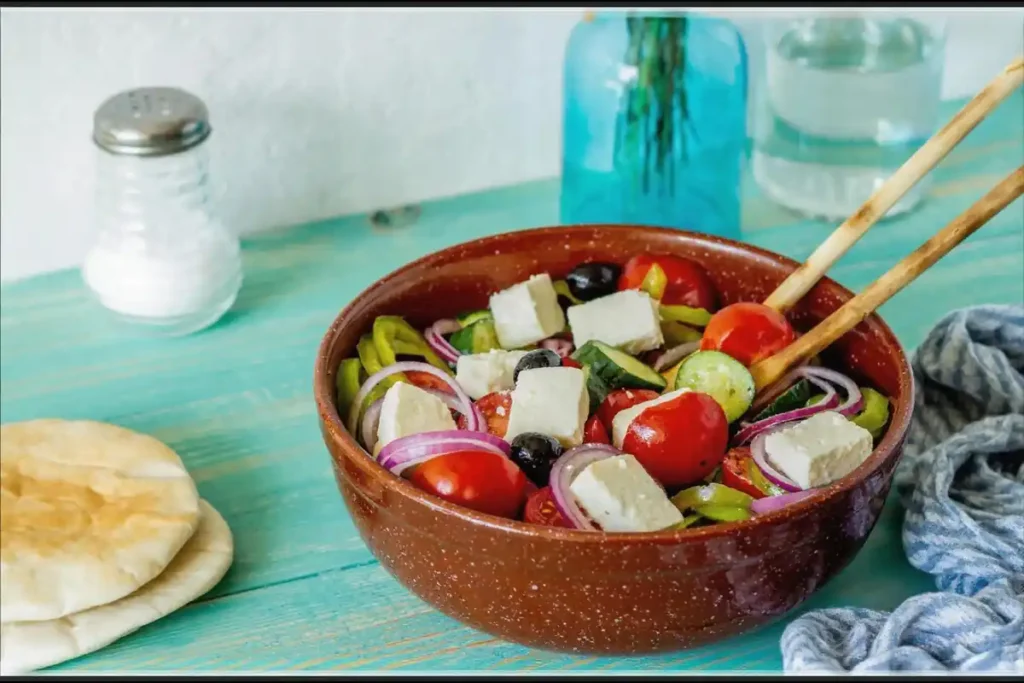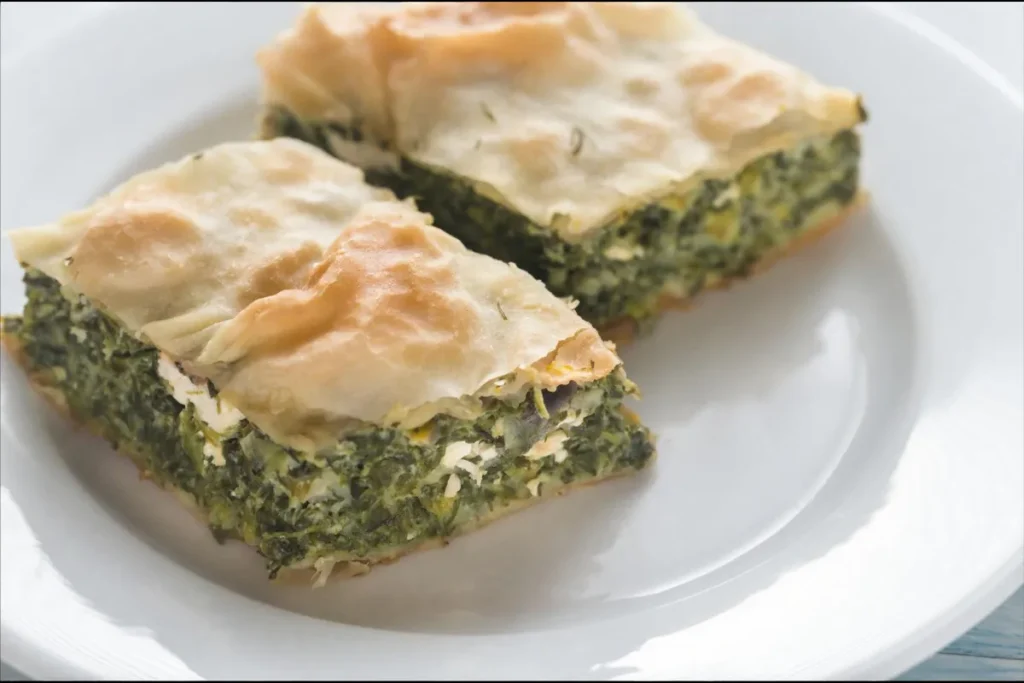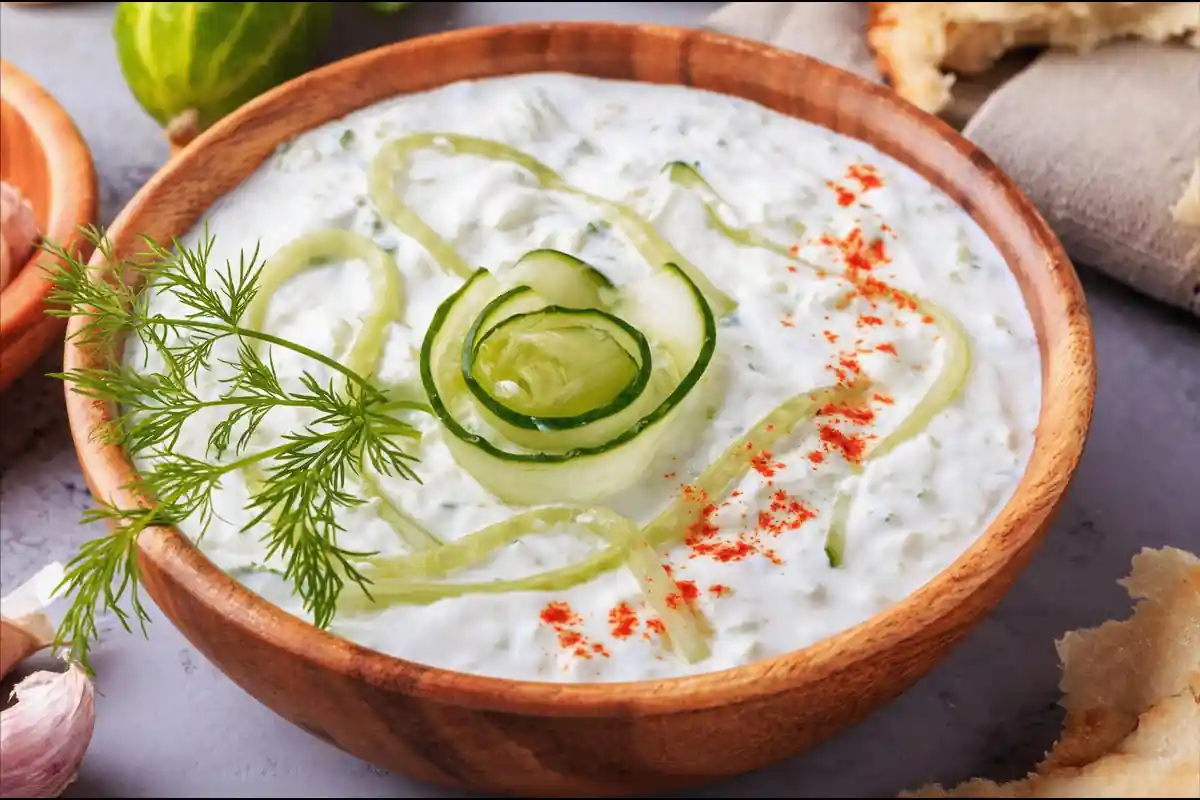Explore Greek recipes, from vibrant meze to hearty mains. Enjoy Mediterranean flavors that are both healthy and delicious.
Introduction
Greek recipes have captivated food lovers for centuries. Indeed, many U.S. home cooks seek to replicate the tastes of the Mediterranean by exploring the vibrant world of Greek cuisine. Consequently, learning about iconic Greek recipes, the cultural background, and essential ingredients is the perfect way to bring authentic flavors into your kitchen. In this in-depth guide, you will discover the historical influences that shaped Greek cooking, delve into classic dishes, and learn how to create at least one mouthwatering recipe at home. Moreover, you will find tips for sourcing quality ingredients, frequently asked questions about Greek food, and more.
Greek cuisine revolves around wholesome staples such as olive oil, fresh vegetables, legumes, and aromatic herbs. Therefore, it aligns closely with what many recognize as the Mediterranean diet—celebrated globally for its potential health benefits. Although modern Greek meals often feature seafood, poultry, and lamb, numerous vegetarian-friendly dishes remain central to this culinary tradition. Most importantly, Greek cooking emphasizes natural flavors, family gatherings, and a sense of community. By the end of this article, you will be well-equipped to cook and serve traditional Greek dinners that capture the spirit and soul of the Mediterranean.
- Introduction
- Exploring the Cultural Roots of Greek Cuisine
- Building Your Greek Pantry
- Techniques to Master Greek Flavors
- Iconic Greek Meze and Small Plates
- Classic Greek Main Dishes
- Vegetarian Delights in Greek Cuisine
- Greek Salads and Sides
- Sweet Treats: Greek Desserts
- Detailed Recipe: Classic Spanakopita
- Tips for Cooking Authentic Greek Recipes
- Frequently Asked Questions (FAQ)
- Conclusion
Exploring the Cultural Roots of Greek Cuisine
Ancient Foundations of Greek Dishes
Ancient Greece laid the groundwork for Greek recipes as we know them today. In earlier times, people relied heavily on simple ingredients found in abundance, such as olives, figs, and grains. Olive oil, in particular, was considered a precious commodity; in fact, it served not only as a cooking medium but also as a prized offering to the gods. Meanwhile, barley and wheat were milled for bread, and legumes like lentils and chickpeas were essential for sustenance.
Furthermore, ancient Greeks regarded dining as a social event. They believed food should nourish not only the body but also the mind. Hence, communal feasting was a cornerstone of their civilization, laying the foundation for the convivial atmosphere that characterizes Greek dinners today.
Influences from Surrounding Regions
Throughout history, Greece came under the influence of neighboring regions. Consequently, Byzantine and later Ottoman rule brought Middle Eastern spices, such as cinnamon and cloves, to Greek cooking. These spices, combined with local herbs like oregano and basil, gave birth to a vibrant fusion. Even so, Greek recipes retained their unique identity through consistent use of olive oil, vegetables, and cheese.
In modern times, global trade and travel have expanded Greek cooking with new tastes and trends. Nevertheless, the heart of Greek cuisine remains tied to its history, family gatherings, and religious celebrations. By appreciating these roots, you will gain a deeper understanding of why Greek dishes continue to enchant diners worldwide.
Building Your Greek Pantry
Essential Ingredients for Traditional Greek Recipes
To bring Greek recipes to life, you will need a well-stocked pantry brimming with fresh and dried staples. Therefore, consider gathering these core items:
- Olive Oil: This is the foundation of almost every Greek dish. Look for high-quality, extra-virgin varieties.
- Olives: Kalamata olives, typically dark purple, add briny richness to salads and dips.
- Herbs and Spices: Oregano, dill, parsley, cinnamon, garlic, and onion.
- Cheeses: Feta is most iconic, but kefalotyri, graviera, and mizithra also play vital roles in Greek cooking.
- Legumes: Lentils, chickpeas, and beans feature prominently in soups and stews.
- Grains: Rice, bulgur wheat, and pasta often appear in Greek-style casseroles or pilafs.
- Fresh Vegetables: Tomatoes, cucumbers, onions, peppers, eggplants, zucchini, and leafy greens.
Because fresh produce is central to Greek recipes, opt for the ripest, most colorful vegetables you can find. If possible, source them locally to capture maximum flavor.
Substitutions and Tips
Although Greek recipes often call for specific ingredients, you can make simple substitutions. For instance, if feta is unavailable, you might replace it with a mild goat cheese. Moreover, when cooking with herbs, fresh and dried forms can be used interchangeably, although fresh herbs tend to impart more aroma.
If you want more inspiration for cooking with vegetables central to Mediterranean cuisine, you may find it helpful to read Common Vegetables in Mediterranean Cuisine (embed link here). This resource explores various vegetable choices ideal for Greek and other Mediterranean-style dishes.
Techniques to Master Greek Flavors
Roasting and Baking
Traditional Greek dinners often rely on roasting or baking ingredients, ensuring all flavors meld together perfectly. For example, dishes like moussaka or roasted vegetables demand a moderate to high oven temperature. In many Greek kitchens, clay or ceramic baking dishes are used, which help distribute heat evenly.
Stewing and Simmering
Greek stews, known as kokkinista, typically involve a slow simmer in a tomato-based sauce. Therefore, long cooking times allow meat or vegetables to become tender and enrich the overall taste. Examples include bean soups like fasolada and hearty stews like giouvetsi, which incorporates orzo or a similar small pasta.
Grilling
In Greece, grilling is synonymous with social gatherings. The smoky aroma of grilled meat or vegetables lures family and friends to the table. By marinating proteins in olive oil, lemon juice, and herbs, then grilling over medium heat, you will capture that quintessential Greek flavor. If you prefer a vegetarian twist, try grilling veggies such as bell peppers and eggplant.
Iconic Greek Meze and Small Plates
Spanakopita
Spanakopita, a savory pastry filled with spinach and feta, is a beloved Greek classic. Layers of flaky phyllo dough wrap around a herbed spinach mixture, creating a delightful appetizer or side dish. Although many consider it a snack, you can serve it with a salad for a light lunch.
Tzatziki
Tzatziki is perhaps one of the most well-known Greek dips. This creamy blend of strained yogurt, cucumber, garlic, and dill is delightfully refreshing. Often served alongside grilled dishes, tzatziki also pairs well with pita bread or vegetable sticks.
Dolmades

Dolmades are grape leaves stuffed with spiced rice or occasionally minced meat. Because each leaf must be carefully rolled and sealed, making dolmades is somewhat labor-intensive. However, the combination of rice, herbs, and tender grape leaves results in a uniquely Greek flavor that truly stands out.
Classic Greek Main Dishes
Moussaka

Moussaka is one of Greece’s most famous casseroles. Typically, it layers eggplant slices, ground meat (you can use beef or turkey), and a creamy béchamel sauce on top. After baking, the top turns golden, while the layers beneath remain moist and flavorful.
Although there are many variations, one popular version includes slices of zucchini and potatoes. This approach adds textural contrast and boosts the dish’s vegetable quotient.
Giouvetsi
Giouvetsi is a comforting dish that combines stewed beef or chicken with orzo. The starch absorbs a tomato-based broth, producing a hearty and creamy meal. Because it is versatile, you might experiment with other grains like rice or small pasta shapes. Serve it hot, garnished with grated cheese for extra richness.
Vegetarian Delights in Greek Cuisine
Fasolada (Greek Bean Soup)
Known as the national soup of Greece, fasolada includes beans, carrots, celery, and onion cooked in a tomato-based broth. This hearty meal is traditionally served with crusty bread. Indeed, it is often a go-to dish for meatless days.
Briam (Roasted Vegetables)
If you appreciate roasted veggies, briam will satisfy your craving. It features zucchini, eggplant, potatoes, and tomatoes sliced and layered in a baking dish. Olive oil, garlic, and herbs tie all the flavors together. Additionally, you can serve briam as a side dish or enjoy it as a main meal with a side of bread.
For more ideas on roasting vegetables the Greek way, consider reading Mediterranean Roast Vegetables (embed link here). This can guide you in selecting the best spice blends and cooking times.
Greek Salads and Sides

Horiatiki (Village Salad)
Horiatiki, commonly referred to as Greek salad, is a simple yet flavor-packed dish. Chopped tomatoes, cucumbers, onions, olives, and feta cheese form the core ingredients. Drizzle olive oil on top, then sprinkle oregano to bring everything together. Since no lettuce is used, the salad bursts with the fresh flavors of summer produce.
Horta (Boiled Greens)
Horta often includes seasonal greens like dandelion, chicory, or spinach. After boiling these greens until tender, you usually drizzle them with olive oil and fresh lemon juice. Indeed, this humble side dish exemplifies the wholesome simplicity that underpins Greek recipes.
Sweet Treats: Greek Desserts
Baklava
Baklava is a sweet pastry made from stacked layers of buttery phyllo dough and finely chopped nuts. Once baked, it is drizzled with syrup or honey. Because the pastry is so thin, it turns crispy, while the nut filling remains moist and flavorful. Many Greek families enjoy baklava during holidays and festivals.
Loukoumades
Loukoumades are bite-sized dough fritters often served with honey and cinnamon. Although they are simple to make, they can be quite addictive. For extra flair, top them with chopped nuts or a sprinkle of powdered sugar.
Detailed Recipe: Classic Spanakopita

For those who want to try their hand at a traditional Greek recipe, Spanakopita is an excellent choice. It is vegetarian-friendly, easy to prepare, and brimming with signature Greek flavors. Most importantly, it showcases the perfect marriage of spinach, fresh herbs, and tangy feta cheese.
Ingredients
- 1 pound (450 g) fresh spinach, washed and roughly chopped
- 1 large onion, finely chopped
- 2 tablespoons olive oil
- 2 garlic cloves, minced
- 1 teaspoon dried dill (or 1 tablespoon fresh dill, chopped)
- 1 teaspoon dried oregano
- 6 ounces (about 170 g) feta cheese, crumbled
- 2 eggs, lightly beaten
- Salt and pepper, to taste
- 8 sheets of phyllo pastry (thawed if frozen)
- 3 tablespoons melted butter (or olive oil) for brushing
(Yields about 8–10 servings.)
Step-by-Step Cooking Instructions
- Sauté the Spinach Mixture
- First, warm 2 tablespoons of olive oil in a large skillet over medium heat.
- Next, add chopped onion and sauté until translucent, which takes about 5 minutes.
- Then, add minced garlic, stirring for an additional minute.
- Afterward, add fresh spinach, stirring until the leaves wilt.
- Season with salt, pepper, oregano, and dill.
- Cool and Combine
- Transfer the cooked spinach mixture to a colander.
- Gently press out any excess liquid to prevent a soggy filling.
- Let the mixture cool for 5–10 minutes.
- Combine the cooled spinach mixture with the crumbled feta cheese and beaten eggs in a bowl.
- Taste again and adjust seasonings if needed.
- Prepare the Phyllo Layers
- Preheat your oven to 350°F (175°C).
- Lightly grease a rectangular baking dish.
- Unroll the phyllo sheets and cover them with a slightly damp towel to keep them from drying out.
- Place one phyllo sheet in the dish, brush it with melted butter or olive oil, and repeat with 3 more sheets, brushing each layer.
- Spread the spinach-feta filling evenly on top.
- Add the Top Layers
- Continue layering 4 more phyllo sheets over the filling.
- Brush each sheet with melted butter or olive oil before adding the next one.
- Tuck in any overhanging edges.
- Bake
- Score the top layers with a sharp knife to make cutting easier later.
- Bake in the preheated oven for 30–35 minutes, or until golden brown.
- Remove from the oven and let it rest for 10 minutes before slicing.
Nutritional Information (Per 100 g)
| Nutrient | Amount |
|---|---|
| Calories | ~220 kcal |
| Protein | ~8 g |
| Carbohydrates | ~16 g |
| Fat | ~14 g |
| Fiber | ~2 g |
| Sodium | ~330 mg |
(Values are approximate and may vary based on exact ingredients used.)
Tips for Cooking Authentic Greek Recipes
- Use Quality Olive Oil: High-grade extra virgin olive oil elevates flavors, especially in cold dishes like salads or dips.
- Balance Flavors: Traditional Greek dinners rely on combining fresh herbs, lemon juice, and a hint of salt. Therefore, taste-test frequently.
- Keep It Fresh: Whenever possible, pick seasonal produce. This approach not only enhances flavor but also respects Greek culinary traditions.
- Time Management: Many Greek recipes require layers of preparation. Thus, setting out all ingredients beforehand (mise en place) streamlines cooking.
- Experiment: Feel free to put your spin on standard Greek food by adding different vegetables or proteins. Adapting recipes is part of the creative process.
If you want to explore other Mediterranean-inspired dishes for lunch, you might consider reading Authentic Greek Breakfast Recipes Traditions (embed link here) for an early-morning Greek treat, or What Is White Chili Made Of? (embed link here) if you desire a unique chili variation to pair with Greek-style side dishes.
Frequently Asked Questions (FAQ)
What are traditional Greek dinners?
Traditional Greek dinners often consist of meze (small plates like tzatziki and dolmades), salads, and a main dish such as moussaka, souvlaki, or a hearty stew. Since Greeks cherish communal eating, multiple plates are usually shared among family members. Moreover, bread, olive oil, and fresh produce commonly feature at the table, emphasizing the importance of simplicity and flavor.
What is Greece’s most popular food?
While opinions vary, many would point to moussaka as a leading contender. This layered casserole of eggplant, ground meat, and creamy sauce is an iconic dish that many people worldwide associate with Greek cuisine. However, other favorites, such as souvlaki and Greek salad, also rank highly in popularity.
What is standard Greek food?
Standard Greek food typically includes dishes that highlight olive oil, vegetables, herbs, and cheese. In addition, grilled or roasted meats, legumes, and savory pies are widely enjoyed. You may also find fresh seafood in coastal regions. Overall, standard Greek food respects tradition and fresh, seasonal ingredients.
What do you serve at a Greek party?
Greek parties or gatherings often feature a meze spread. Tzatziki, spanakopita, dolmades, olives, and grilled vegetables are common choices. For the main course, trays of roasted vegetables or meats, along with Greek salad, might take center stage. Additionally, dessert platters often include bite-sized pastries like baklava or loukoumades.
Conclusion
Greek cuisine offers a unique blend of wholesome ingredients, centuries of history, and time-honored family traditions. Therefore, cooking Greek recipes at home can be a rewarding experience that brings loved ones together. From hearty casseroles like moussaka to healthy sides such as horta, you will find each dish bursting with unmistakable Mediterranean flavors.
By mastering basic techniques—like roasting, grilling, and baking—and stocking your pantry with fresh produce, aromatic herbs, and quality cheeses, you can recreate standard Greek food any day of the week. Ultimately, Greek cooking is about sharing, enjoying, and celebrating life’s simple pleasures. So, gather your ingredients, invite friends to join in the fun, and savor the magic of Greek cuisine in your own kitchen.

